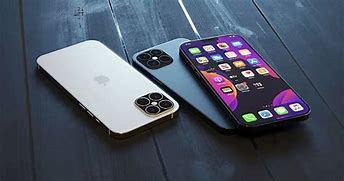Entertainment
Two mn Indians using high-speed Wi-Fi at 23 railway stations:Google
 New Delhi:Nearly two million Indians are using high-speed Wi-Fi services at 23 railway stations across the country that Google provided as part of its project, the technology giant revealed on Friday.
New Delhi:Nearly two million Indians are using high-speed Wi-Fi services at 23 railway stations across the country that Google provided as part of its project, the technology giant revealed on Friday.
Speaking during Google-owned multinational conglomerate Alphabet’s 2016 second quarter earnings call, India-born CEO Sunder Pichai said that Google is with Indian Railways and RailTel to bring high-speed wireless access to millions of people who use railway stations.
“There are already two million people logging in every month. They are using as much as 15 times the data that they would otherwise use in a full day on their cellular networks.” Pichai said.
Owned by Indian Railways, RailTel focuses on providing broadband and virtual private network (VPN) services.
Last month, on the occasion of the inaugural World Wi-Fi Day by the Wireless Broadband Alliance that aims to provide a platform to help bridge the digital divide, Google celebrated the success of its project with Railtel to provide high speed Wi-Fi at railway stations across India.
The company initially rolled out the network at four of India’s largest stations — Sealdah, Lucknow Junction, Lucknow City and Gorakhpur Junction.
The company had said while they are only at approximately 20 per cent of the roll-out schedule for this year, the response has been phenomenal.
“We saw 100,000 users connect to the network within a week of launch at Mumbai Central and as we started rolling out the network at more stations, we saw exponential jump in the consumption of the network,” the company wrote in a blog post.
“Users in tier 2 cities latched onto the network with more enthusiasm and we saw much higher consumption of data in tier 2 cities, where access to high-speed broadband is more challenging,” Google added.
Entertainment
Casino Days Reveal Internal Data on Most Popular Smartphones

International online casino Casino Days has published a report sharing their internal data on what types and brands of devices are used to play on the platform by users from the South Asian region.
Such aggregate data analyses allow the operator to optimise their website for the brands and models of devices people are actually using.
The insights gained through the research also help Casino Days tailor their services based on the better understanding of their clients and their needs.
Desktops and Tablets Lose the Battle vs Mobile
The primary data samples analysed by Casino Days reveal that mobile connections dominate the market in South Asia and are responsible for a whopping 96.6% of gaming sessions, while computers and tablets have negligible shares of 2.9% and 0.5% respectively.
The authors of the study point out that historically, playing online casino was exclusively done on computers, and attribute thе major shift to mobile that has unfolded over time to the wide spread of cheaper smartphones and mobile data plans in South Asia.
“Some of the reasons behind this massive difference in device type are affordability, technical advantages, as well as cheaper and more obtainable internet plans for mobiles than those for computers,” the researchers comment.
Xiaomi and Vivo Outperform Samsung, Apple Way Down in Rankings
Chinese brands Xiaomi and Vivo were used by 21.9% and 20.79% of Casino Days players from South Asia respectively, and together with the positioned in third place with a 18.1% share South Korean brand Samsung dominate the market among real money gamers in the region.
Cupertino, California-based Apple is way down in seventh with a user share of just 2.29%, overshadowed by Chinese brands Realme (11.43%), OPPO (11.23%), and OnePlus (4.07%).
Huawei is at the very bottom of the chart with a tiny share just below the single percent mark, trailing behind mobile devices by Motorola, Google, and Infinix.
The data on actual phone usage provided by Casino Days, even though limited to the gaming parts of the population of South Asia, paints a different picture from global statistics on smartphone shipments by vendors.
Apple and Samsung have been sharing the worldwide lead for over a decade, while current regional leader Xiaomi secured their third position globally just a couple of years ago.
Striking Android Dominance among South Asian Real Money Gaming Communities
The shifted market share patterns of the world’s top smartphone brands in South Asia observed by the Casino Days research paper reveal a striking dominance of Android devices at the expense of iOS-powered phones.
On the global level, Android enjoys a comfortable lead with a sizable 68.79% share which grows to nearly 79% when we look at the whole continent of Asia. The data on South Asian real money gaming communities suggests that Android’s dominance grows even higher and is north of the 90% mark.
Among the major factors behind these figures, the authors of the study point to the relative affordability of and greater availability of Android devices in the region, especially when manufactured locally in countries like India and Vietnam.
“And, with influencers and tech reviews putting emphasis on Android devices, the choice of mobile phone brand and OS becomes easy; Android has a much wider range of products and caters to the Asian online casino market in ways that Apple can’t due to technical limitations,” the researchers add.
The far better integration achieved by Google Pay compared to its counterpart Apple Pay has also played a crucial role in shaping the existing smartphone market trends.
Content provided by Adverloom

























